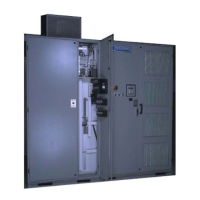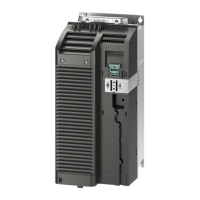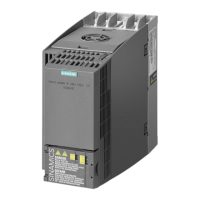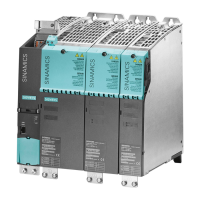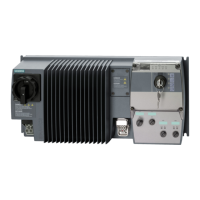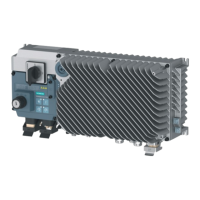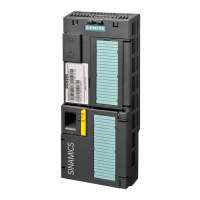4. During magnetization, the ux reference is ramped through the ux ramp to the ux demand
value set by the menu. The reactive current, IdsRef, is set for the IM within the Command
Generator for the ux reference. This level is set by the "No load current" setting (1060).
5. Once the ux ramp output is above 95% of setpoint, the Flux-At-Set-Point
("FluxAtSetPoint_I") signal is set true, and the drive enters the Run state and the HST state
machine advances to the next state. This ag is set within the Command Generator Flux
Ramp.
6. Once in the drive Run state, the HST state machine advances to state ‘T2’. The Torque Current
is assigned from the network input to the IqsFF signal since the control loops are disabled at
this point. The slip calculation uses the current command rather than the current feedback
until the completion of the state machine. The current input is completely controlled by the
PLC and must be ramped and controlled tightly to prevent IOC or OOS trips.
The reason fast updates are required is to provide ne resolution for control.
7. The Speed reference (input to the speed regulator) comes directly from the network –
bypassing the speed ramp and the other speed modifying algorithms. The slip frequency is
calculated internally based on the current reference sent from the PLC and added to this
speed reference (speed command becomes the frequency). The speed ramp and droop
calculations are bypassed throughout the HST state machine. All speed updates, including
ramping, must be handled by the PLC at the increased rate. Steps in the input may result in
a trip.
8. The PLC then applies both current and frequency references in a ramped fashion. That is, no
internal ramps are used and imposed current and speed limits are not exceeded. The PLC
does not allow a speed setting above the slip frequency until the ux is established.
9. Once the motor speed has reached the rated slip of the motor, the state machine advances
to the next state, ‘T3’ where it delays for the length of the ux ramp rate. After the delay the
"MagnetizationComplete_I" ag is set and the state machine advances to ‘T4’.
10.In the ‘T4’ state, the speed is ramped up to the desired minimum speed reference. Once there,
the PLC sets the "CompleteHstMode_O" to advance to the next stage. The drive
acknowledges with the "AtMinSpeed_I" ag and the state machine advances to the next state
‘T5’.
Note
Without the PLC, the drive will advance to the speed as set by the active minimum speed
parameter. When the motor speed matches this speed the "AtMinSpeed_I" ag will be set and
the state machine will advance to the next state – ‘T5’.
11.In the 'T5' state, the control loops are all preset for the current conditions, and the loops
enabled. The state machine advances to state ‘T6’, the nal HST state.
12.Droop calculation is now based on IqsFil (ltered lqs current feedback). Slip compensation
becomes active (based on Iqs ref instead of IqsFF) and the speed regulator and ramp are
preset. After a delay of one second, the HST complete ag
"HighStartingTorqueModeComplete_I" is set true, the speed ramp and the ux regulator are
enabled;, and, the drive continues to run independent of the HST mode.
13.Using the desired speed command (through the speed ramp), the drive runs as though there
is no HST mode The PLC continues to control speed and torque, redirected by means of speed
demand and torque limit.
Advanced Operating Functions
8.23 Conveyor Applications
NXGPro+ Control Manual
Operating Manual, A5E50491925A 329
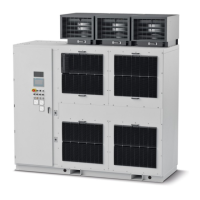
